Coffee has always fueled the Smithsonian
From the gallons consumed by James Smithson during his university days to an upcoming exhibition on the impact of the elixir on ecosystems to the staff members who choose to remain anonymous about their addiction, the magic bean and its rich brown decoction have always been a part of the Smithsonian’s history.
Thirst is deadlier than hunger; only breathing matters more. The availability of safe drinking water, which is more likely to be contaminated as the surrounding population grows, has constrained and guided humanity’s progress. The search for safe hydration has been humanity’s driving force. Beer, wine, and later, spirits, which killed germs by alcohol, helped early communities grow (Standage).
Coffee was discovered in the Arabian Peninsula and spread throughout Europe. Unlike alcoholic beer and wine, coffee didn’t impair thinking, making it the preferred drink of the Enlightenment (Standage).
The first coffeehouse in Europe opened in Oxford in 1640, two years before the first London coffeehouse and almost 150 years before James Smithson, the founding benefactor of the Smithsonian, enrolled in university. University authorities originally tried to shut down the coffeehouses, thinking them a distraction, but on the contrary, they encouraged scientific discussion (Standage). Coffeehouse culture was well established by Smithson’s student days.
Even before he graduated , Smithson split his time between London and its scientific innovation, and Oxford. London coffeehouses were centers for commercial, political, and intellectual exchange, and Smithson took full advantage of them. Coffeehouse discussions led to the establishment of scientific societies, and specific societies were linked to specific coffeehouses (Turner).
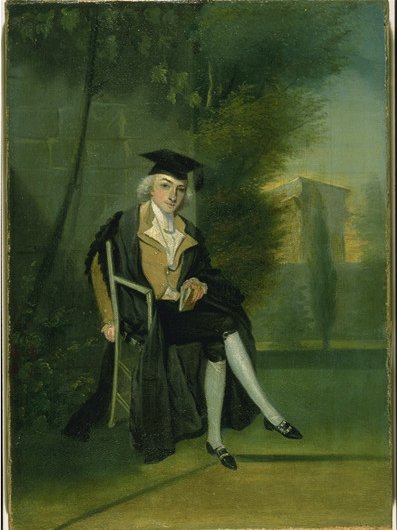
A young James Smithson, dressed in Oxford regalia, by James Roberts, ca. 1786. Image courtesy of Smithsonian Institution Archives website
Smithson belonged to the Society for Promoting Natural History, which met at the Black Bear coffeehouse in Piccadilly. He was invited to join the Coffee House Philosophical Society by Royal Society member James Kirwan. Members of the Royal Society continued their scientific discussions, and would often repeat their scientific discussions, at the coffeehouse after their meetings, and coffeehouse discussions would have brought Smithson to the attention of the Society’s members and may have led to his election to the Royal Society (Turner). Perhaps these activities inspired Smithson’s search for a better cup of coffee.
Some of these scientific societies limited their coffeehouse meetings to elite members, -but many were open to anyone who could afford a cup of coffee. Gentry and tradesmen could sit down together “without affront,” and seamen and merchants realized that science could improve navigation and commercial success. Coffeehouses were a venue to advance the Enlightenment ideal of using science to improve the human condition, and Smithson was exposed to this practical application of the ideal at a formative period in his academic and professional life (Turner).
Smithson’s time in the coffeehouses may have had a longer legacy. As a well-read, Enlightenment gentleman, he would have been aware of George Washington’s farewell address and its admonition to “Promote then, as an object of primary importance, institutions for the general diffusion of knowledge.” Smithson spent much of his later life on the continent but returned to London in1825 to settle his affairs. He would have been aware of the Mechanics Institutes movement and their goal of “the diffusion of knowledge,” a term used at the time to refer to public education. Leaders of the Mechanics Institutes recognized that lack of education was a class barrier and that the “diffusion of knowledge” could break down those barriers (Turner). In his book, The Science of James Smithson, Turner argues that the final clause of Smithson’s will may have been inspired by the Mechanics Institutes, but it’s not unreasonable to believe that Smithson’s sentiment to both increase and diffuse knowledge started much earlier, in the coffeehouses of Oxford and London.
Smithson was so involved in coffee culture that he published a method to brew a better cup of coffee. Whether he did so in search of a tastier cup or to help the owners of the coffeehouses to make the most of the precious beans is open for debate. But his experiment was a success.
I brewed three cups of coffee – using Smithsonian-certified bird-friendly coffee (more on that below) – to test the common method of Smithson’s time, his improved method, and my convenient drip coffeemaker. Following the 18th-century recipe, I boiled eight ounces of water, added 1 fluid ounce of ground coffee, stirred it a bit, took the pot off the heat, and let it steep for 20 minutes (the standard boil-water advisory time). Following Smithson’s recipe, I placed the same in a mason jar, sealed it firmly, placed the jar in a pot of boiling water so the contents were submerged, reduced the heat to a simmer, and steeped it for 20 minutes. I used the same proportions in my drip coffee maker. The results surprised me. While I thought I preferred strong, and somewhat bitter coffee, Smithson’s recipe won. The traditional cup had cooled off during steeping, so I heated it in the microwave; it was quite harsh and bitter. Smithson’s cup was smooth, rounded, and more full-bodied than I expected; and as it turns out, I didn’t miss the bitterness. It’s not as convenient as the coffee maker, but I’m going to continue the experiment by making a larger amount, keeping it refrigerated, and warming a cup at a time.
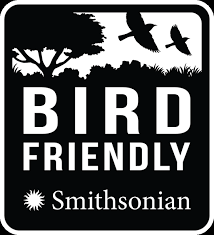
Look for this logo on Smithsonian-certified bird-friendly coffee. Image courtesy of Smithsonian’s National Zoo website
For all three experiments, I used Bird Friendly® certified coffee as advised by the Smithsonian Migratory Bird Center. The Center was founded in 1991 to foster understanding and protection of bird migration. Bird populations in the U.S. and Canada have declined by almost 30%, or three billion birds, since the 1970s. More than 70 species of North American migratory birds overwinter in coffee plantations in the tropics, but most coffee plantations remove forest cover to grow the coffee plants in full sun. While the sun-grown method produces more coffee, it also destroys habitat and requires harmful pesticides and fertilizers. Shade-grown coffee protects the canopy habitat in which migratory birds survive the winter. Drinking Bird Friendly coffee is one of the seven simple actions you can take to preserve North American songbirds. While I wasn’t able to find Smithsonian-certified Bid Friendly coffee locally, it is available online.
To experience a shade-grown coffee farm for yourself, and to see the variety of birds they support, visit the Songbird Aviary: Bird Friendly Coffee Farm at the Smithsonian’s National Zoo’s redesigned Bird House exhibit, scheduled to reopen in spring 2022. This aviary will be the largest in the Bird House, completely roofed by skylight and comprising a single large planter. It will feature rain bars; a stream and pool; and a lush, jungle-like setting with olive, palm, and fig trees; ground cover; and coffee plants.
As can be seen here, from the early days of James Smithson’s scientific research to the upcoming Bird House exhibition, coffee has always been a beverage that helps us to find common ground(s).
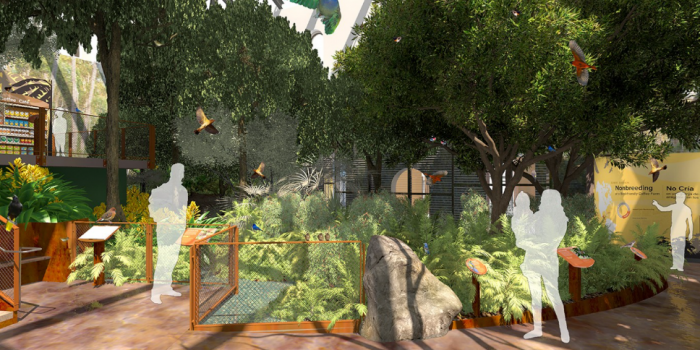
Credit: image courtesy of the Smithsonian’s National Zoo website
Read more:
Standage, Tom. History of the World in Six Glasses. New York: Walker Publishers, 2005. Ch. 1 for safe beverages, Chs. 7 & 8 for coffee
Turner, Steven. The Science of James Smithson. Washington, DC: Smithsonian Books, 2020. Ch. 16 for coffee recipe, Ch. 21 for “the increase and diffusion of knowledge”
Ewing, Heather. The Lost World of James Smithson: Science, Revolution, and the Birth of the Smithsonian. New York: Bloomsbury, 2007.
Landers, Jackson. “The Founder of the Smithsonian Institution Figured Out How to Brew a Better Cup of Coffee.” Smithsonian magazine, September 20, 2016.
Website for the National Zoological Park, Smithsonian Migratory Bird Center pages, especially Help Migratory Birds and Bird Friendly Coffee
Website for National Zoological Park, Bird House Preview pages\
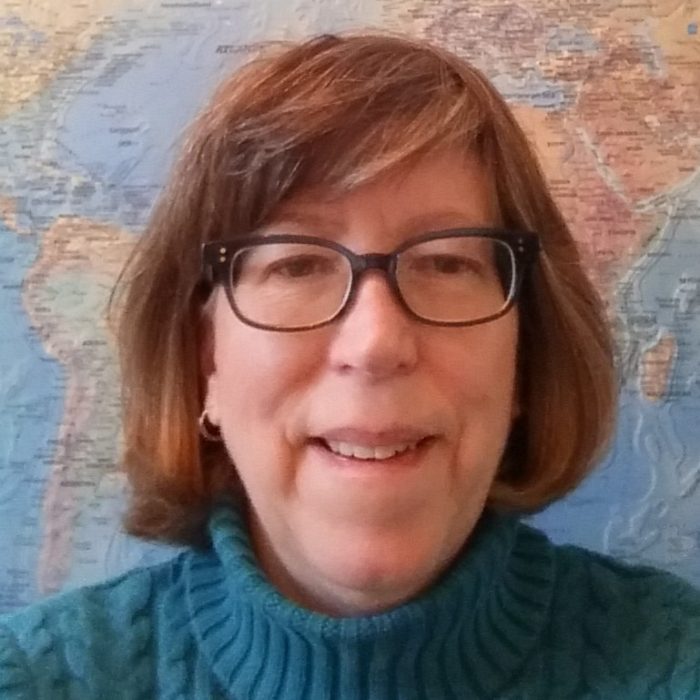
Bridget Balog is a Visitor Services Coordinator with the Office of Visitor Services and Volunteer Management, overseeing the Public Inquiry Mail volunteer program.
Posted: 4 October 2021
-
Categories:
History and Culture , Volunteer Voices , Zoo & Conservation Biology Institute

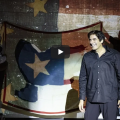






An excellent article on coffee, indeed. I am skeptical however, preferring German coffee myself. I have to admit one of my favorite jokes is:
Why do the English drink tea? Answer: Have you had their coffee?